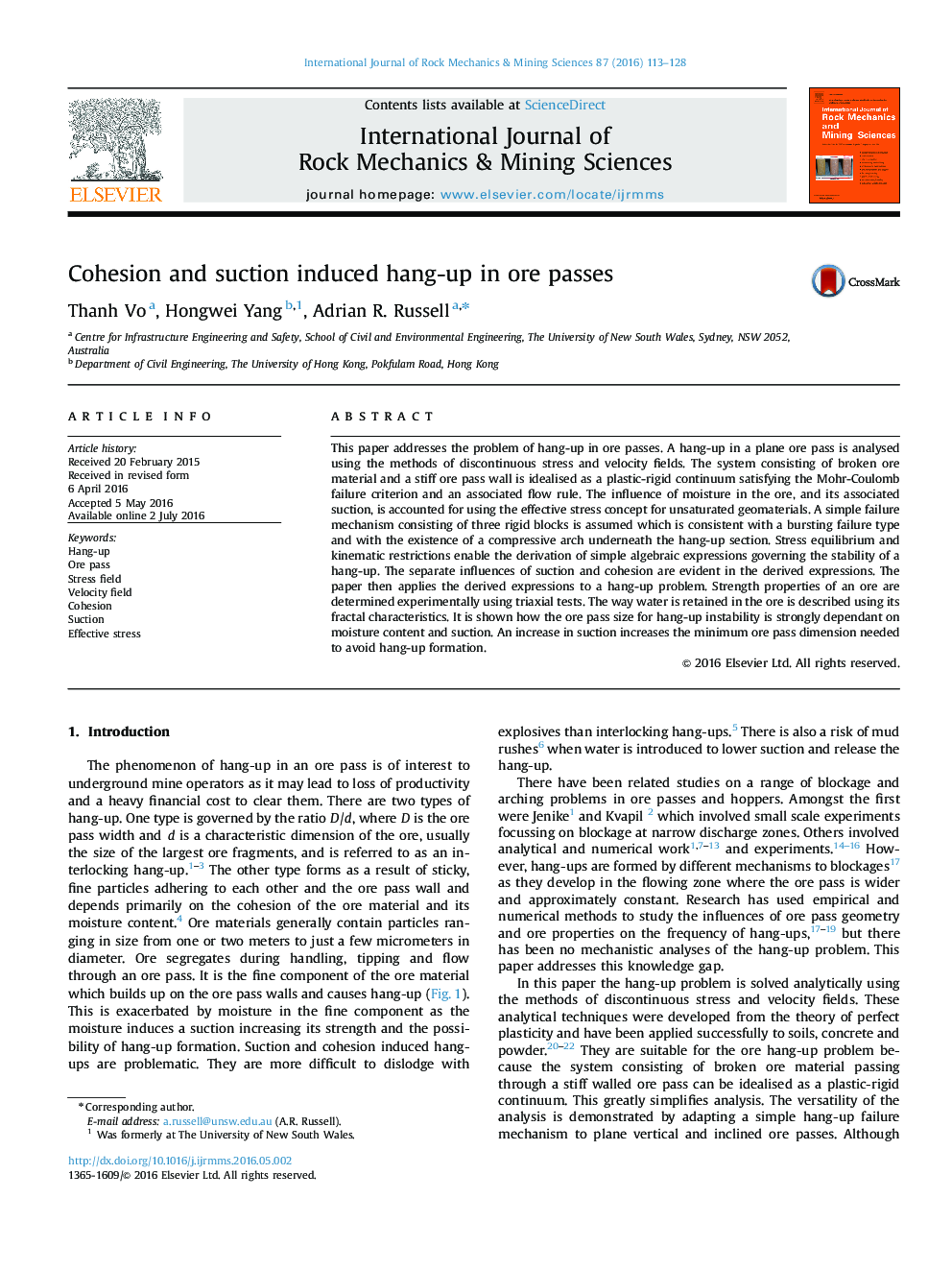| کد مقاله | کد نشریه | سال انتشار | مقاله انگلیسی | نسخه تمام متن |
|---|---|---|---|---|
| 809344 | 1468682 | 2016 | 16 صفحه PDF | دانلود رایگان |
• Ore pass hang-up problem is solved analytically considering both suction and cohesion.
• Analysis shows a bursting mechanism is more critical than a collapse mechanism.
• A simple expression for the ore pass size needed to prevent hang-up formation is presented.
• An ore material was tested to assess relationship between strength, suction and moisture content.
• The ore pass size for hang-up instability is strongly dependant on moisture content and suction. An increase in suction increases the minimum ore pass dimension needed to avoid hang-up formation.
This paper addresses the problem of hang-up in ore passes. A hang-up in a plane ore pass is analysed using the methods of discontinuous stress and velocity fields. The system consisting of broken ore material and a stiff ore pass wall is idealised as a plastic-rigid continuum satisfying the Mohr-Coulomb failure criterion and an associated flow rule. The influence of moisture in the ore, and its associated suction, is accounted for using the effective stress concept for unsaturated geomaterials. A simple failure mechanism consisting of three rigid blocks is assumed which is consistent with a bursting failure type and with the existence of a compressive arch underneath the hang-up section. Stress equilibrium and kinematic restrictions enable the derivation of simple algebraic expressions governing the stability of a hang-up. The separate influences of suction and cohesion are evident in the derived expressions. The paper then applies the derived expressions to a hang-up problem. Strength properties of an ore are determined experimentally using triaxial tests. The way water is retained in the ore is described using its fractal characteristics. It is shown how the ore pass size for hang-up instability is strongly dependant on moisture content and suction. An increase in suction increases the minimum ore pass dimension needed to avoid hang-up formation.
Journal: International Journal of Rock Mechanics and Mining Sciences - Volume 87, September 2016, Pages 113–128
